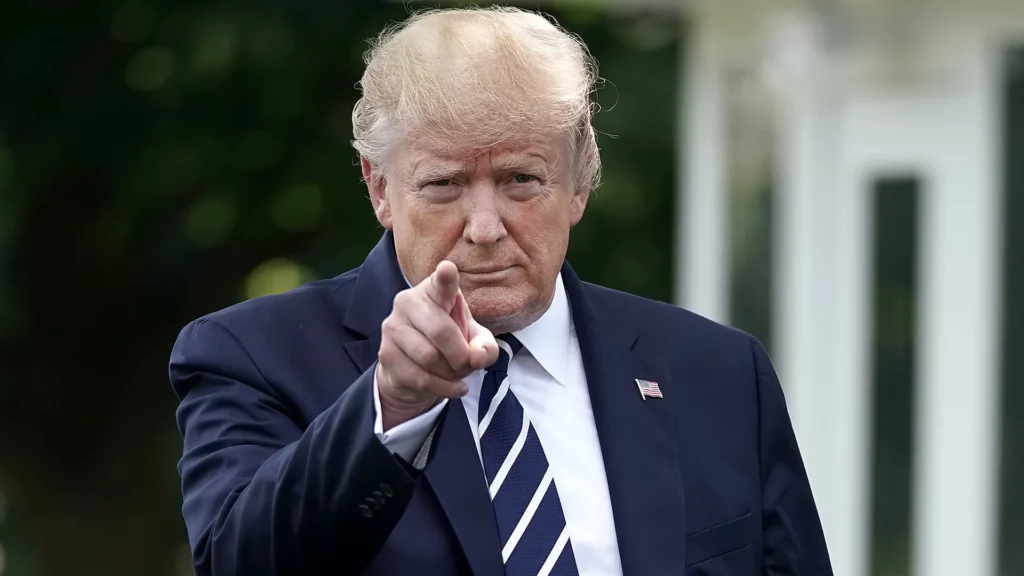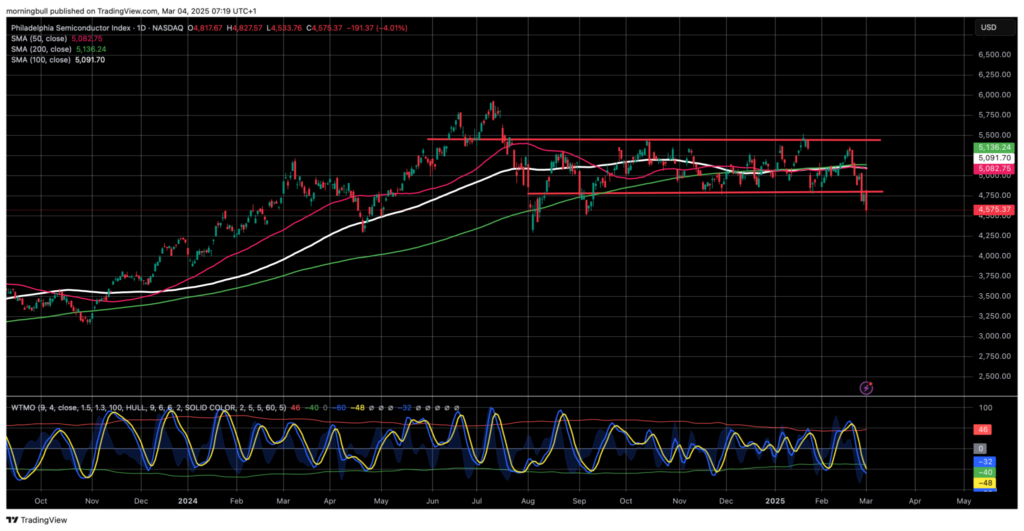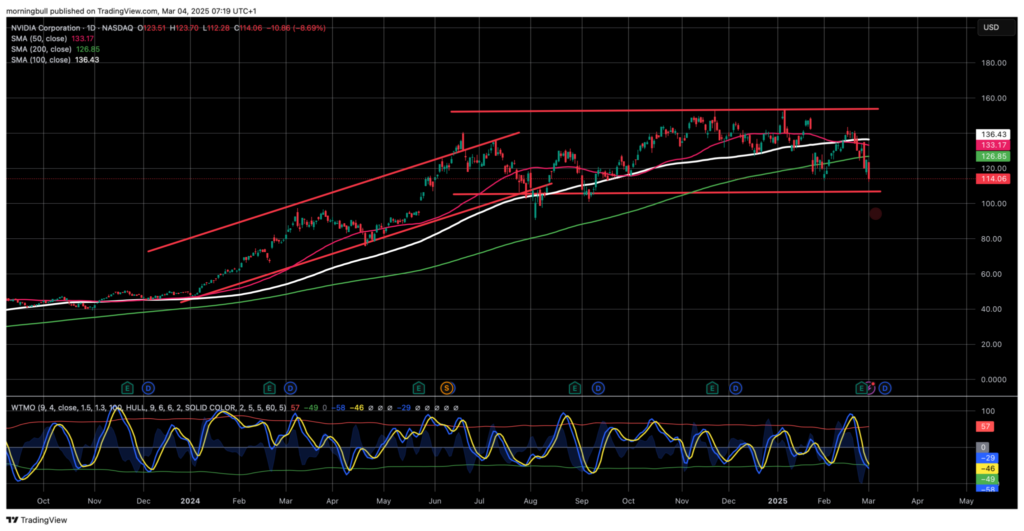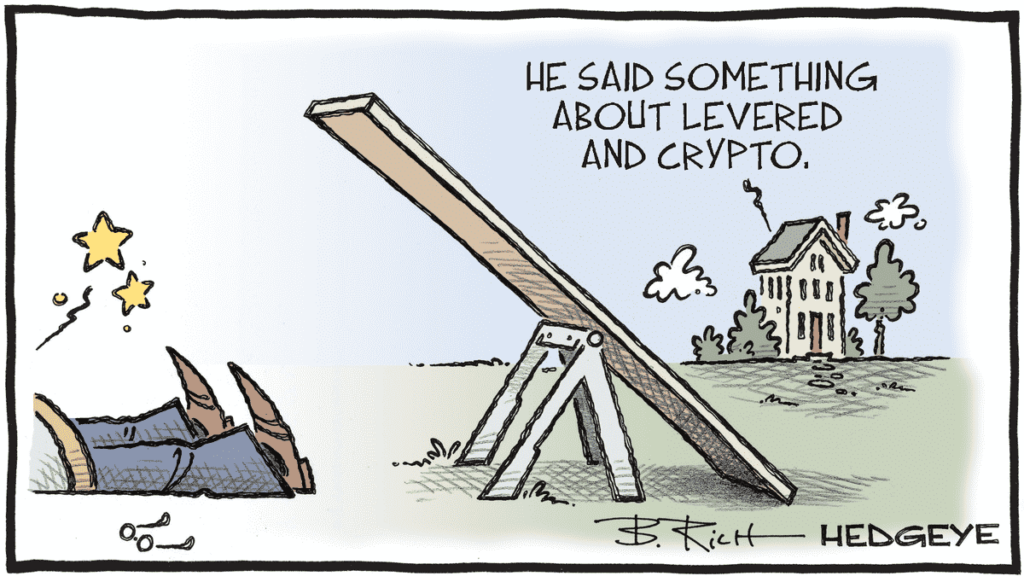
It is extremely interesting to watch the world splitting into multiple parts. I’m not sure if that’s “reassuring,” but one thing is certain: it leaves no one indifferent. Yesterday was the perfect representation of the global mess we are sinking into at the speed of a galloping bear. Between leaders printing money like there’s no tomorrow and spending it all on weapons, making the defense sector explode while gleefully heading to the front lines, and Trump kicking off the steamroller of tariffs while cutting off aid to Ukraine, the equation is becoming seriously complicated.
Putting Things in Order
To avoid mixing everything up and to make sure we don’t forget anything, let’s take things step by step. Let’s start with what happened in Europe yesterday. In the morning, everyone was excited about the concept of the U.S. cryptocurrency reserve, which sent the sector soaring—but that wasn’t all. There was also the prospect of massive investments in the defense sector, as European leaders now see themselves as Navy SEALs, all dressing like Zelensky to look more like “soldiers.” Every politician in Europe has switched to the warrior side of the force, constantly preaching about a UNITED Europe (a concept that exists only in the adolescent dreams of some). A UNITED Europe that, according to them, would have a military stronger than Russia, stronger than the U.S., and soon even stronger than China.
Well, the only difference between these regions of the world is that the U.S. is a country, Russia is a country, China is a country, and Europe is a club of countries that don’t all agree with each other. They can’t even decide on the regulations for selling Greek jam in a German supermarket, yet they want us to believe they can unite against Russia—a Russia that, according to some delusions, is already positioning itself in the Parisian suburbs.
Regardless of one’s opinion on the matter, it’s essential to consider Bayrou’s speech yesterday. The guy showed up before the National Assembly to explain, with a few well-calculated additions, that Europe has the strongest army in the world (if they can agree) and that by spending billions, it will be easy to crush Putin. Coming from a guy who never did his military service and was exempted because his ears wouldn’t allow him to wear a helmet, this is immediately reassuring. Personally, it makes me want to enlist…
But back to the financial markets. Yesterday, just the idea of massive investments in the defense sector—which had already been hinted at two weeks ago, but less so, because this time, the London meeting made everyone realize it was “for real”—made ESG investors completely change their tune. ONCE AGAIN, they rushed into defense stocks. It was the same story all over again: Thales surged 16%, Dassault Aviation 15%, BAE Systems followed suit. Rheinmetall soared like a missile, up over 13%, Hensoldt gained 22%, Saab more than 11%, and Leonardo jumped 16%. I won’t list them all, but since November, Rheinmetall alone has nearly tripled in value. Clearly, the European arms industry is thriving, and the idea of going to war seems to excite politicians more than ever. Yesterday’s European session was explosive—both literally and figuratively—with the DAX closing up 2.64%, at an all-time high, just like Switzerland, which remains a neutral island while awaiting its F-35s, which, at this delivery pace, may end up in a museum before ever seeing Emmen.
And Then Came Trump
After Europe’s conscription day—where world leaders handed themselves military ranks and decided on the colors of their medals—we closed the markets in full-on war euphoria. At times, we almost expected Macron, Starmer, and von der Leyen to break into a HAKA dance to demonstrate their warrior spirit.
And then the Americans arrived. Or rather, I should say: TRUMP arrived. Because right now—and since January 27—there isn’t a single day when the markets don’t revolve around him. The problem is, no one knows what fuels this guy, because to create this much chaos in the markets every five minutes, he must have an unbreakable cardio.
A quick reminder: Trump’s last act of faith was announcing the “crypto reserve” on Sunday night. We won’t go back to that—for now. Instead, yesterday’s Trump-made topic was the announcement of new investments in the U.S. and a return to the subject of tariffs.
On the investment side, things looked promising: TSMC is investing $100 billion in the U.S., and Honda, which had planned to build a factory in Mexico, will now do it in the U.S. At that very moment, we were still thinking:
“Well, this isn’t bad. Trump is bringing business back to the U.S., which will inevitably create jobs and growth. Maybe these tariff policies aren’t so crazy after all.”
I have to admit, the joy didn’t last long, because right after that, we came back to the topic of tariffs. But before going further, let’s remember that throughout yesterday, traders were thinking:
“Well, we’re not too worried about tariffs. Trump will surely show some flexibility and give Canada and Mexico more time to negotiate. We all know tariffs are just a massive bargaining tool, and everything will turn out fine.”
Actually: NOT AT ALL…
The U.S. President decided that tariffs would take effect immediately—end of discussion. At that point, if you remember how the markets reacted when tariffs were first announced… well, it was the same story. The markets plunged into freefall, just as we’ve seen before. Cryptos crashed again because Trump didn’t provide ENOUGH DETAILS about his federal crypto reserve. Tech stocks collapsed because hedge funds are reducing their exposure to the MAGNIFICENT SEVEN and looking for more defensive alternatives. Volatility exploded by 24%, and suddenly, articles began appearing with headlines like: “Options Traders Are Preparing for a Stock Market Crash.”
And to top it all off, the Atlanta Fed released its GDPNow indicator, suggesting that the U.S. could be heading toward a recession—largely due to tariffs. Well, “recession” is a bit of a dirty word nowadays, since we no longer say “recession”; we say: TRUMPSESSION.

Trumpcession and GDP NOW
But let’s quickly go back to this number, which no one ever talks about until it becomes convenient. “Trumpcession” refers to the risk of a U.S. recession triggered by Donald Trump’s economic policies. The Atlanta Fed’s GDPNow model, known for being quite reliable, suddenly revised its first-quarter growth forecast from +4.0% to -2.8%, fueling fears of a slowdown (immediately following the tariffs). This drop is driven by a record trade deficit and a struggling manufacturing sector. However, it’s important to note that this number reflects the present moment and that any “good news” could turn things around in an instant.
The problem is that yesterday, alongside this alarming figure, markets also showed increasing nervousness: the Nasdaq plunged 2.64%, the Magnificent Seven are no longer so magnificent, and Nvidia closed lower than it did during the DeepSeek incident. Meanwhile, bond yields are dropping, and wealthy households—who sustain consumer spending—might cut back due to the market downturn. The uncertainty surrounding protectionism, international relations, and federal budget cuts is weighing on economic confidence. If this trend continues, the Fed might even be forced to cut rates sooner than expected.
But inflation is still lurking, and if rates are lowered too quickly, we could end up in a situation we’ve been trying to avoid for years. Powell has always said he’d rather fight to pull the economy out of recession than battle runaway inflation.
In short: the U.S. market got a slap in the face. If we add up the immediate tariffs, the Atlanta Fed’s economic fears, soaring volatility, traders warning of a CRASH, geopolitical tensions at their peak, capital flowing out of Apple, Microsoft, Amazon, and Meta, Nvidia breaking recent lows, and Trump cutting off Ukraine’s funds while basically calling Zelensky a “moron,” we had one hell of a day that sent U.S. indices to panic-inducing levels…
The only good news? This morning, futures are up, and at least for now, they don’t seem ready to dig the hole even deeper.

Nvidia Chart – Source: Tradingview.com
And Now?
We’ve witnessed Europe’s explosive rally and the U.S.’s implosion—all within 12 hours. The next big question is whether European markets will stage a dramatic reversal this morning or if they’ve simply stopped caring about the U.S. altogether now that they’ve declared themselves at peace.
In any case, Asian markets are holding up relatively well—China and Hong Kong remain mostly unchanged, while Japan is just giving back yesterday’s gains, staying in a sideways pattern that feels more like watching paint dry than an active market.
Then, there’s gold, which now stands at $2,901, and oil—another story entirely. Yesterday, just to add to the already grim mood, oil prices took a sharp dive after several OPEC members announced plans to increase production next month, potentially leading to an oversupply. The price per barrel has now dropped to $67.89, and from a technical standpoint, the six-month uptrend support just got wiped out.
Meanwhile, Bitcoin and its peers staged a spectacular comeback following the stock market’s decline and Trump’s lack of “sufficient details” about his strategic crypto reserve—a detail that could still emerge at any moment. But for now, Monday’s bounce has been erased completely, and we’re back to square one. Bitcoin is currently at $84,000.
Today’s News
In terms of headlines, Canada has announced retaliatory measures against U.S. tariffs, China is following suit, and the same topics from yesterday and last night are still dominating discussions.
On the corporate side, ON Semiconductor is reportedly pursuing Allegro Microsystems, with Bloomberg suggesting that a takeover is in the works.
Beyond that, it feels like we’re in deep trouble, and it wouldn’t take much for things to spiral further. Futures are currently up 0.29%, and European markets are on edge ahead of the opening bell. At this rate, if Russia invades Poland, the game would be over.

Today’s Numbers
Today, we’ll have unemployment data out of Europe and a speech from Williams of the Fed. But honestly, the one thing we’ll all be hoping for this Tuesday morning in March is that Trump stays quiet—just for one day. We need a break to regain our bearings because it’s been a lot of Mondays in the history of the 2025 markets, and we keep getting hammered. The good news is, in general, we do end up bouncing back. I do say, generally.
That said, tonight there will be a webinar at Swissquote, which will be led energetically by Marco and myself. If you’re not signed up yet, it’s free, and you can register by clicking [here]. It starts at 6:00 PM, ends at 7:00 PM, and we’ll talk about Artificial Intelligence and investments—even though it’s not the hot topic this morning. But you can also ask us anything that’s on your mind! So, we’ll see you tonight, and for those with other plans, see you tomorrow!!!
Still, have a great day!

